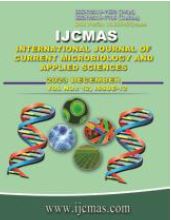


 National Academy of Agricultural Sciences (NAAS)
National Academy of Agricultural Sciences (NAAS)

|
PRINT ISSN : 2319-7692
Online ISSN : 2319-7706 Issues : 12 per year Publisher : Excellent Publishers Email : editorijcmas@gmail.com / submit@ijcmas.com Editor-in-chief: Dr.M.Prakash Index Copernicus ICV 2018: 95.39 NAAS RATING 2020: 5.38 |
Mulberry (Morus alba) contains a variety of bioactive compounds. The phytochemicals present in mulberry leaves are philobatannins, saponin, tannins, alkaloids, phenol, antioxidant, carotenoids, lutein, zeaxanthin and flavonoids. Drying is the most common and traditional method for preservation of food. The drying methods, drying air temperatures and drying time had significant effects on quality of the dried product. Mulberry leaves were dried in three different drying methods: tray, heat pump and fluidized bed drying with four levels of temperatures such as 40, 50, 60 and 70ºC.The drying characteristics such as moisture content, drying rate, moisture ratio, moisture diffusivity was studied and quality parameters such as colour, protein content, ash content, dehydration ratio, water activity, total phenol and flavonoids were determined. The drying rate increased with drying air temperatures for all drying methods. The time required for drying was minimum in case of fluidized bed dryer for all temperatures. The effective moisture diffusivity ranged between 5.92 × 10-11 to 1.24 × 10-10 m2/s in tray drying, 6.08 × 10-11 to 1.01 × 10-10 m2/s in heat pump drying and 9.85 × 10-11 to 2.42 × 10-10 m2/s in fluidized bed drying. The moisture diffusivity increased with air temperature for tray, heat pump and fluidized bed dryer. Total phenol and flavonoid were found maximum i.e., 1033.33 mg GAE/ 100 g and 605.30 mg RE/ 100 g.
 |
 |
 |
 |
 |